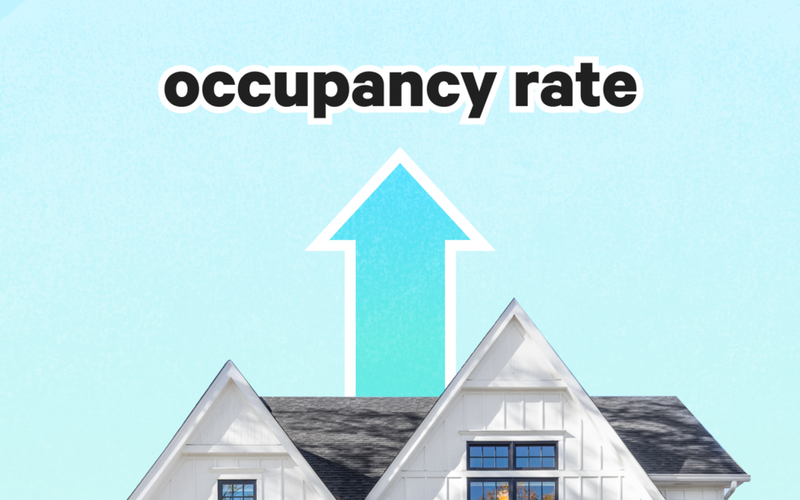At Arrived, we are constantly searching for properties that can appreciate in value and provide stable rental income for our investors. However, finding, buying, and funding the properties is only half the battle – we must also be efficient operators to ensure the investment’s long-term success.
One of the ways we maximize investor returns is by ensuring our properties maintain a high occupancy rate.
The key: our property management partners
So, how do we maximize our occupancy rate? We rely heavily on our property management (PM) partners, who are hand-picked by our team based on their experience, track records of excellence, and reputations with property owners and residents in their regions.
From the start, Arrived’s strategy for seeking residents focuses on signing 2-year leases, achieving optimal rent based on the individual market, and thoroughly vetting resident applicants. All of our PM partners are fully aligned and equipped to execute these goals.
Overview of the process
After Arrived finds and purchases a property, our team and PM partners immediately begin the process of getting the property “list-ready.” These steps include:
- Completing any necessary renovations
- Having the property professionally cleaned
- Painting or touching up finishes, if necessary
- Inspecting flooring and fixtures for repairs
- Upgrading appliances
The next step: finding tenants
Once the property is list-ready, our PMs take over. The following are some strategies our PMs use to quickly find tenants:
- Market the property effectively: To attract potential tenants, PMs market the property in a way that showcases its unique features and benefits. This can be done through online listings, open houses, and other marketing materials. Some of the websites our homes are listed on include Homes.com, Move.com, ForRent.com, Zillow.com, Trulia.com, Hotpads.com, and Realtor.com.
- Provide excellent customer service: Good customer service can be a major factor in attracting and retaining tenants. Our PMs are responsive to all inquiries within 48 hours.
- Screen tenants: Our PMs pre-screen tenants for tours of properties and quickly begin the application process if they are interested in moving forward.
Retaining residents
Another way we aim to maximize occupancy rates over the long term is by retaining residents. Retaining residents is essential for any property manager as it ensures stability in rental income and reduces the cost and time associated with finding new tenants. The following are some effective strategies PMs implement to retain residents:
- Excellent Communication: Open and regular communication with residents is key to building a good relationship and addressing any concerns they may have. Our PMs should be easily accessible and responsive to inquiries and complaints.
- Speedy Maintenance & Repairs: Keeping the property well-maintained and addressing any repair needs promptly is crucial. A well-maintained property not only keeps residents happy but also adds value to the property and reduces the risk of costly repairs down the line.
- Reviewing Rent: Offering appropriate rental rates is a significant factor in retaining residents. Our PMs review rental rates regularly to ensure they align with market trends and meet Arrived’s requirements.
- Flexibility: Offering flexible lease options, such as the ability to renew early, can make residents feel more secure in their living arrangements and encourage them to stay.
Challenges that can affect occupancy rate
While we are confident in our process and partners, there’s always the possibility that a house sits vacant for longer than anticipated. Here are three factors that could cause a property to sit vacant after being deemed “list-ready”:
- Economic Conditions: Economic conditions, such as unemployment rates, can impact the vacancy rate of a rental property. In times of economic hardship, people may be less likely to rent a property.
- Seasonality: Single-family rental properties are highly seasonal. New lease-ups typically drop off sharply in mid-September and stay low through the first quarter of the following year.
- Competition: There may be a large number of available rental properties in the area, making it difficult for our property to stand out and attract tenants.
We can also run into the situation where a house sits vacant after being occupied by a resident; here are some factors that could play a role in this situation:
- Evictions: There are many situations where a resident could decide to stop paying rent or violate lease terms, resulting in the eviction process.
- Tenant Turnover: High tenant turnover can lead to extended vacancy periods for a rental property. Properties with a history of high tenant turnover may be viewed as less attractive to potential residents.
While many factors can lead to vacancies at our properties, we actively manage everything within our control, such as price, condition, and even location, to an extent.
To ensure we’re effectively administering properties that need additional help securing tenants, here are some things we do to address vacant properties:
- Our team meets with our PMs weekly
- Our team reviews property listings internally weekly
- Our pricing team reviews comparable properties, demand seasonality for the market, any opportunity for incentives, potential price drops, and potential improvements to help with leasing the property out more quickly.
However, it’s important to note that cutting the price to lease a property is not as simple of a decision as it sounds since it drastically impacts the long-term return potential of a property; this is because a price adjustment can lead to an inability to raise the rent back to the market norm at the end of the lease.
Closing thoughts
Occupancy rate is a crucial metric in real estate investing. Arrived, and our PM partners are focused on maximizing our occupancy rate for both existing and future properties to ensure regular returns that allow our investors to build wealth over the long term.









